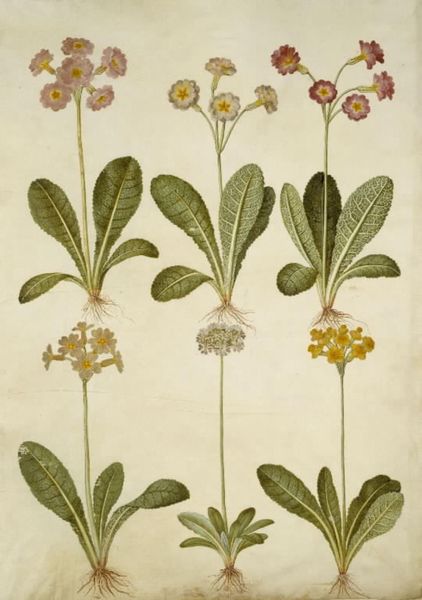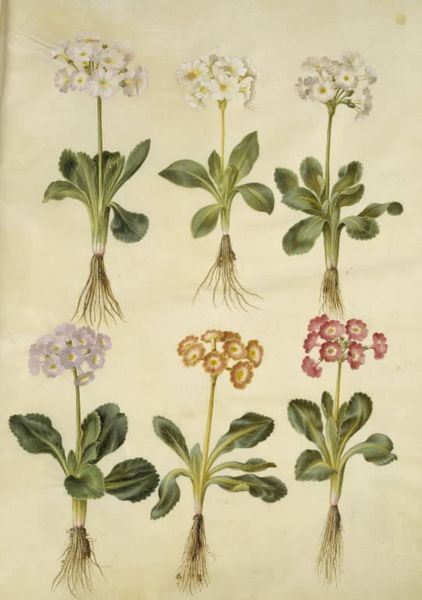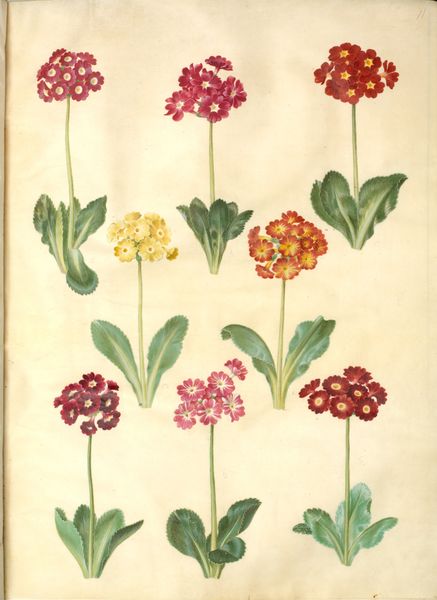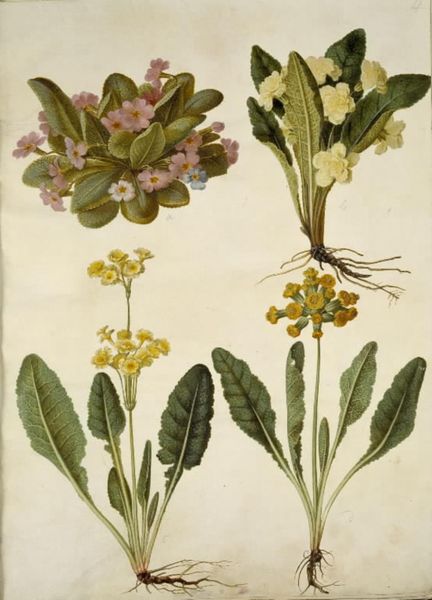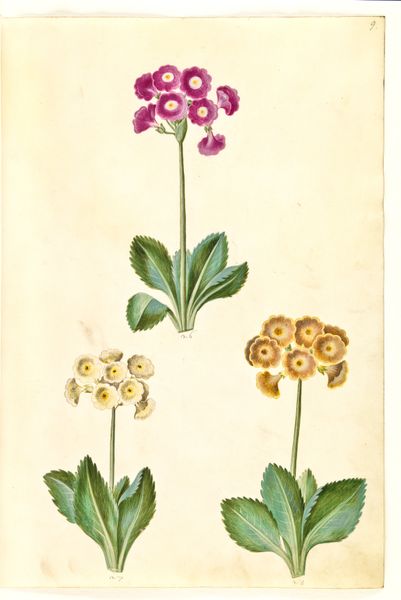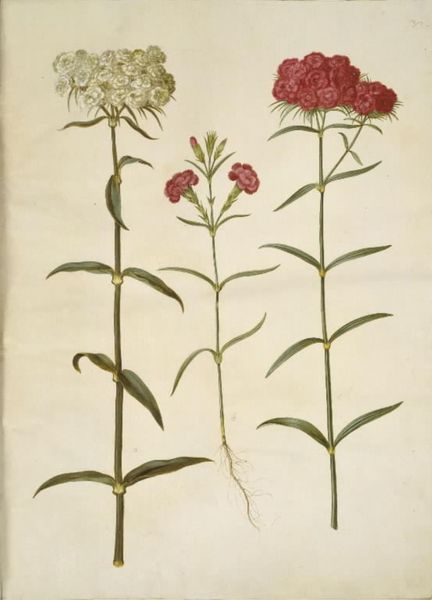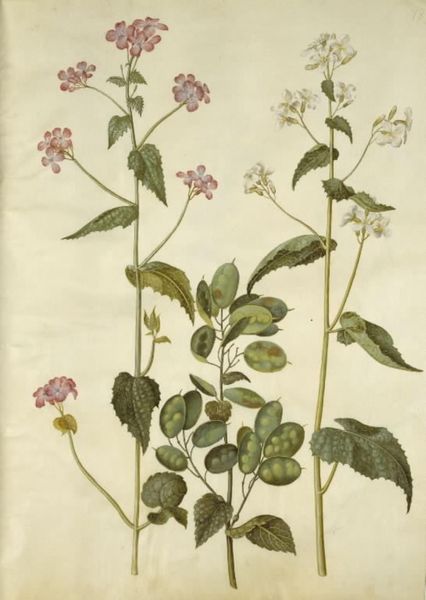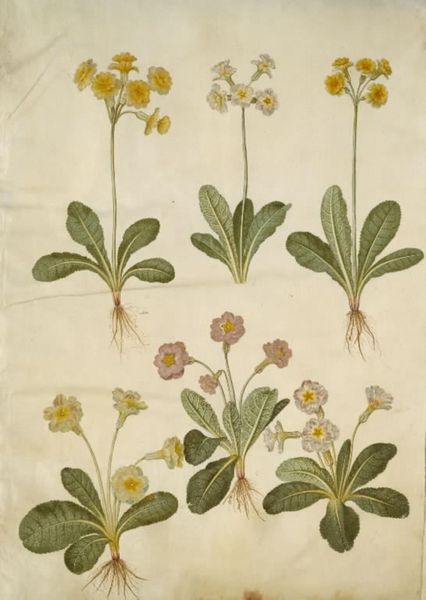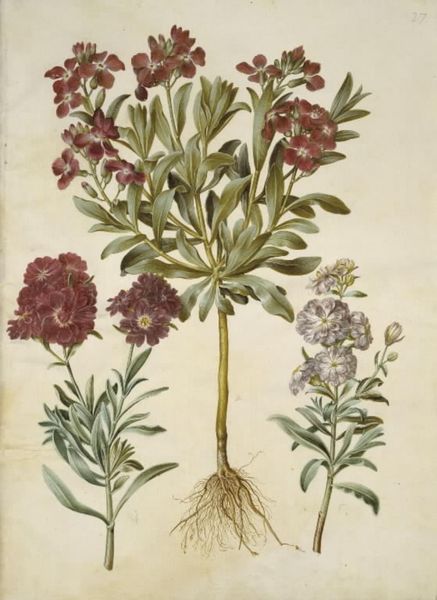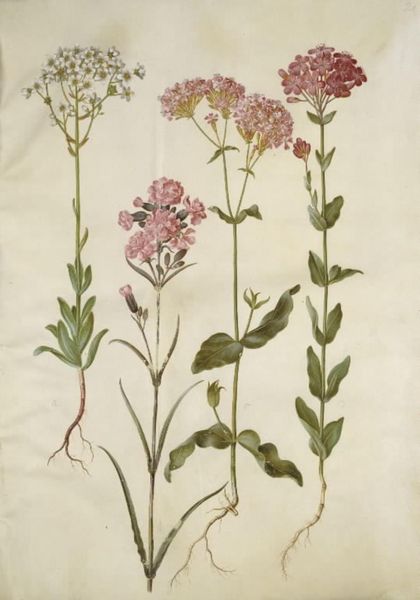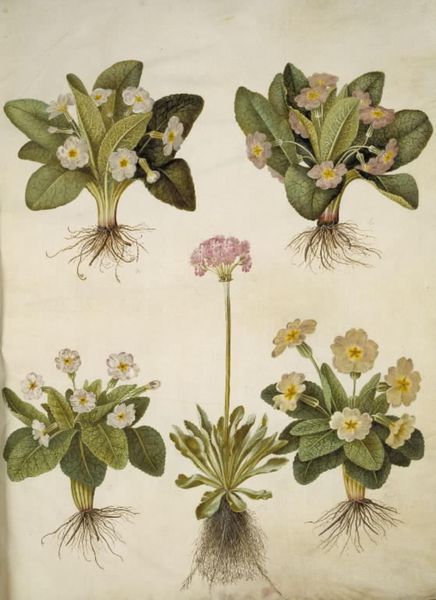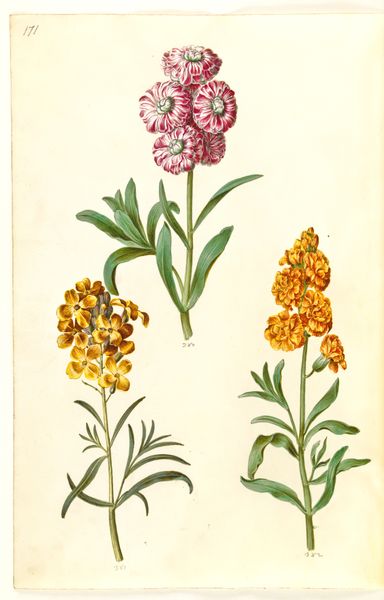
drawing, gouache, paper, watercolor
#
drawing
#
water colours
#
gouache
#
paper
#
watercolor
#
coloured pencil
#
northern-renaissance
Dimensions: 505 mm (height) x 385 mm (width) (bladmaal)
Curator: This watercolor, gouache, and coloured pencil drawing of Primula ×pubescens, or have-aurikel, hails from sometime between 1649 and 1659 and is the work of Hans Simon Holtzbecker. It’s currently housed in the SMK, the Statens Museum for Kunst. Editor: Oh, how charmingly precise! I immediately feel like I'm stepping into an alchemist's studio, or perhaps a botanist's whimsical dream journal. The colors are so delicate, almost ethereal. It reminds me of secrets whispered in gardens. Curator: Yes, that resonates. Holtzbecker was a master of botanical illustration. His dedication to accurately capturing each specimen reflects not just an artistic eye, but a scientific one too. He must have delighted in these plants. Editor: It's more than mere representation; I'd say Holtzbecker imbues each flower with its own individual character. Look how differently the light kisses each cluster, how he renders each leaf like a tiny vessel. It feels reverential, like painting icons. The way the roots are showing has to signify something. Are they reaching? Being offered? It is like little blooming portraits of the soul. Curator: Indeed. In the Northern Renaissance, flowers often carried symbolic meanings, conveying messages about mortality, love, or religious devotion. The primula, for instance, was associated with youth and renewal but also carried a somber aspect since, mythically, they sprang up on battlefields. Its depiction as "aurikel," hints at something special – a prized beauty with hints of melancholy. Editor: I'm getting a sense of capturing impermanence. These weren't fleeting snapshots of beauty; the intention appears to transcend a passing admiration for these colorful displays of nature’s prowess. There is some sort of desire to seize and protect it, preserve its very soul as if against eventual, inexorable dissipation. It has the weight of human hopes against a vast background of existential questioning. Curator: A thoughtful assessment. These early botanical illustrations are important documents; capturing rare specimens and cataloguing an expanding understanding of the natural world. At that moment, art and science intertwined; Holtzbecker preserved history within each petal, imbuing an age of transformation that blended inquiry with deep human meaning. Editor: I agree, those blooms resonate, still inviting introspection beyond a pretty arrangement of the eye – beckoning thoughts that extend much farther back into antiquity. It whispers still, quietly waiting on a turning planet, patiently poised like beauty just beginning, just beyond that ever elusive, far horizon.
Comments
No comments
Be the first to comment and join the conversation on the ultimate creative platform.
